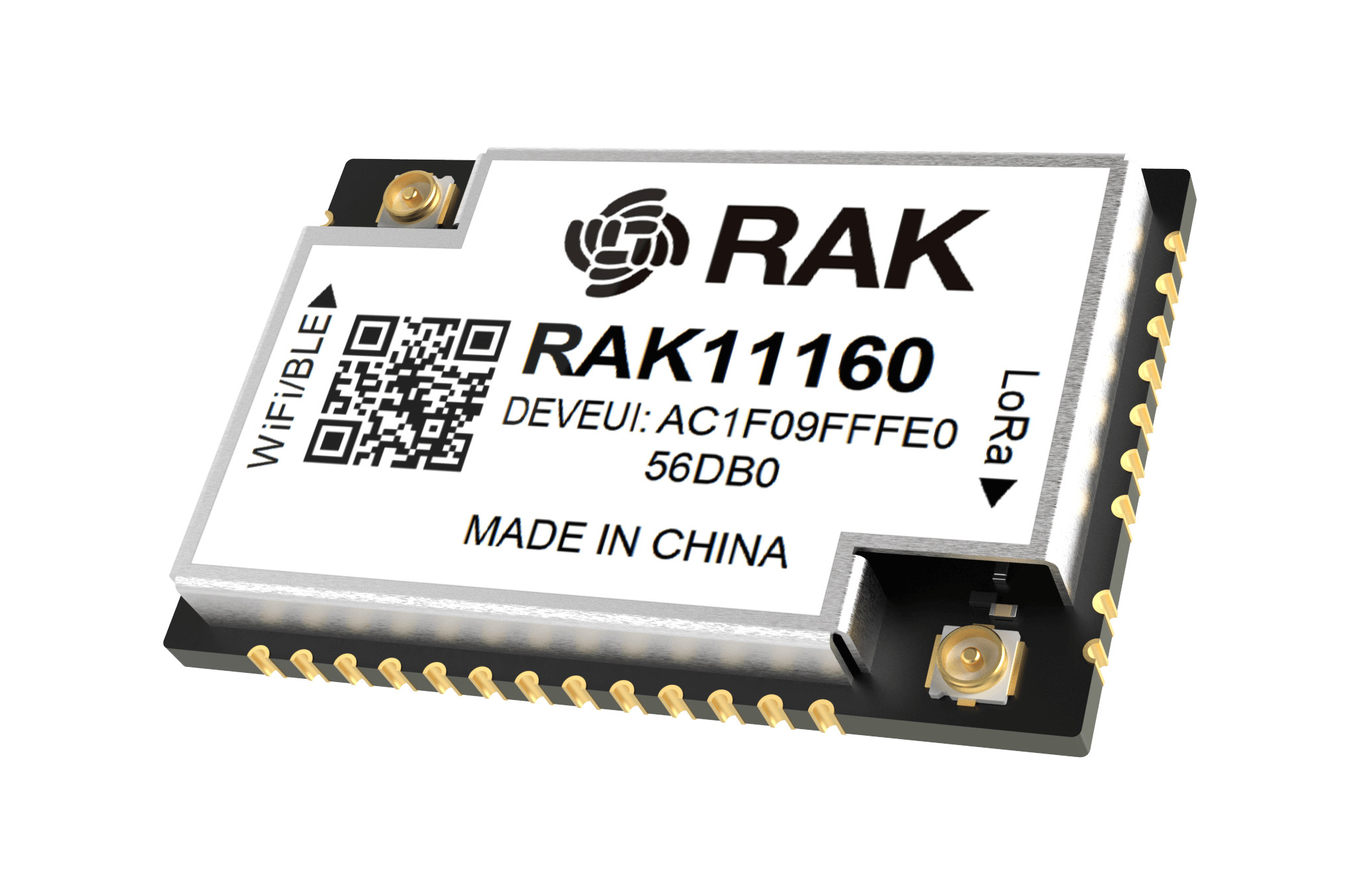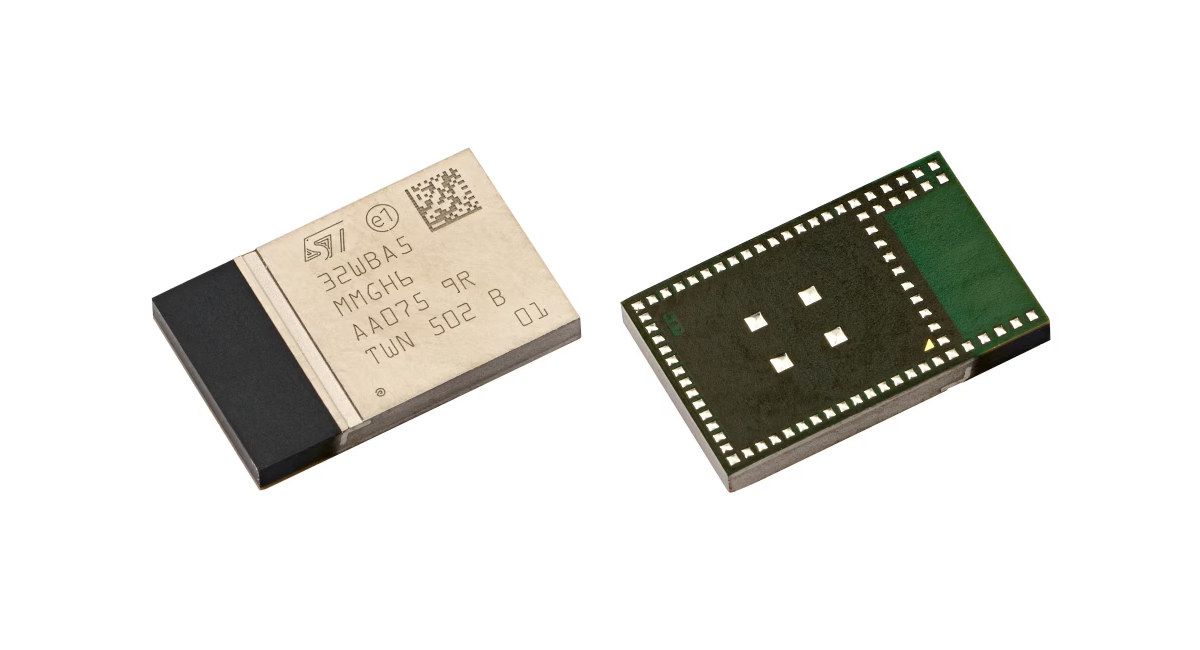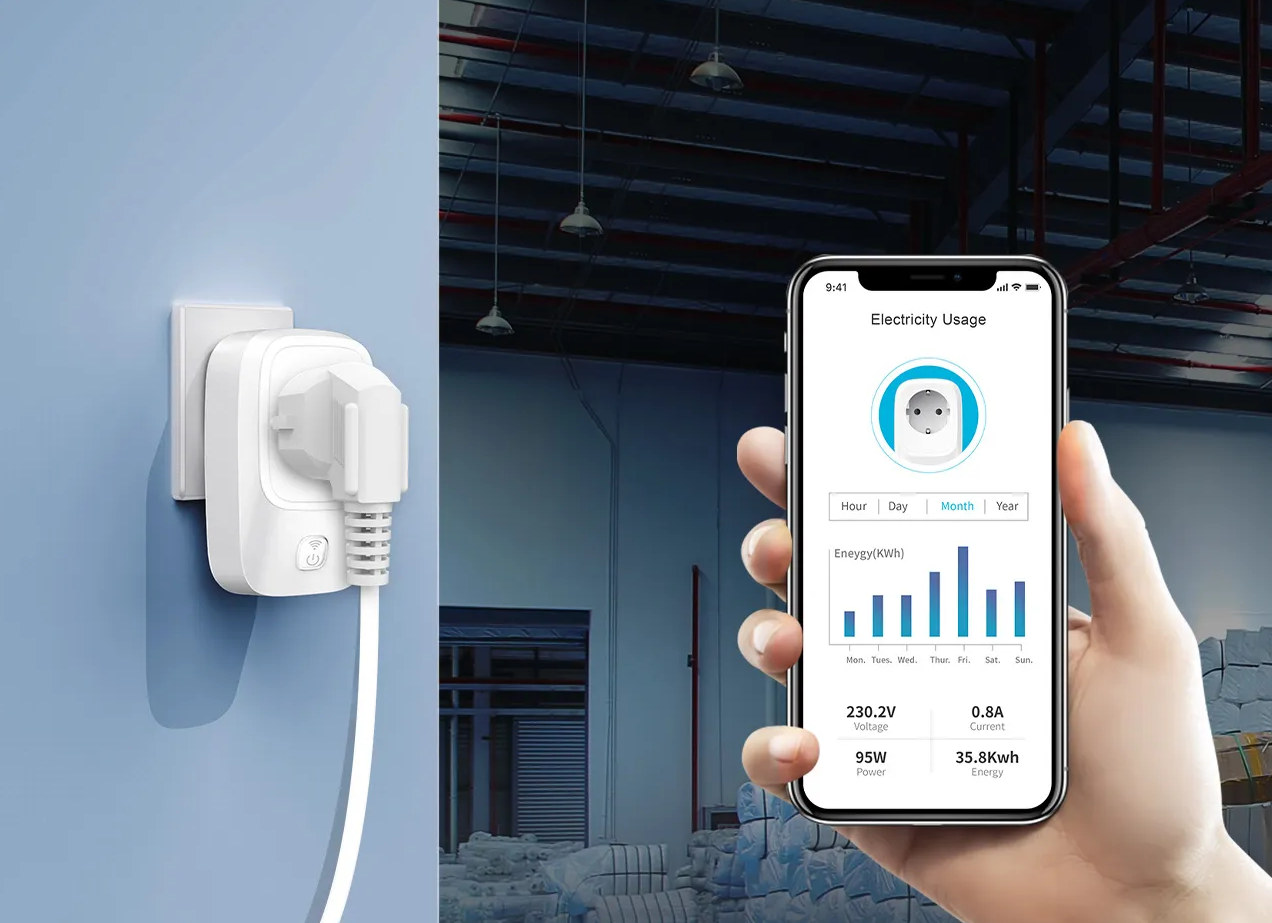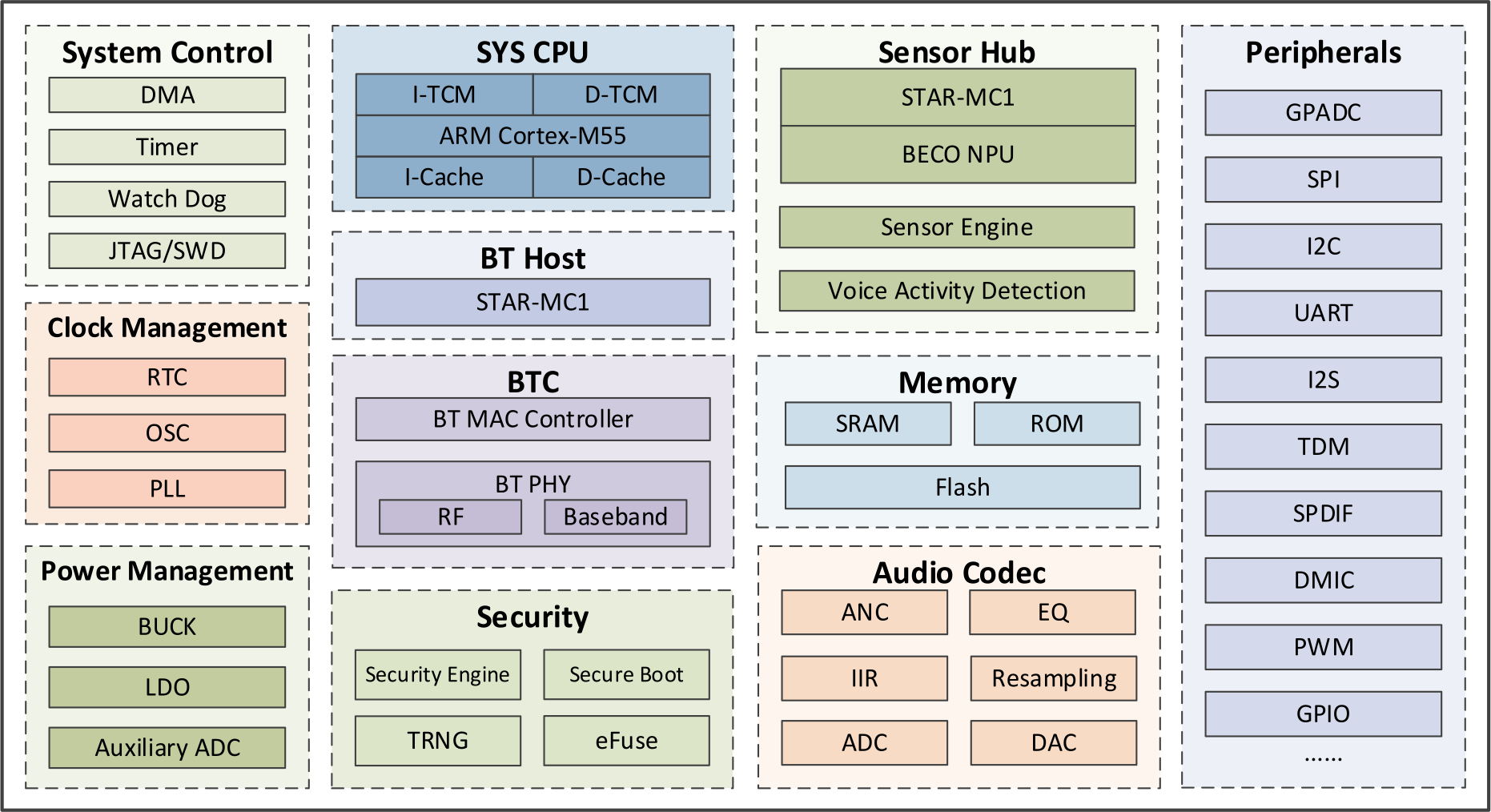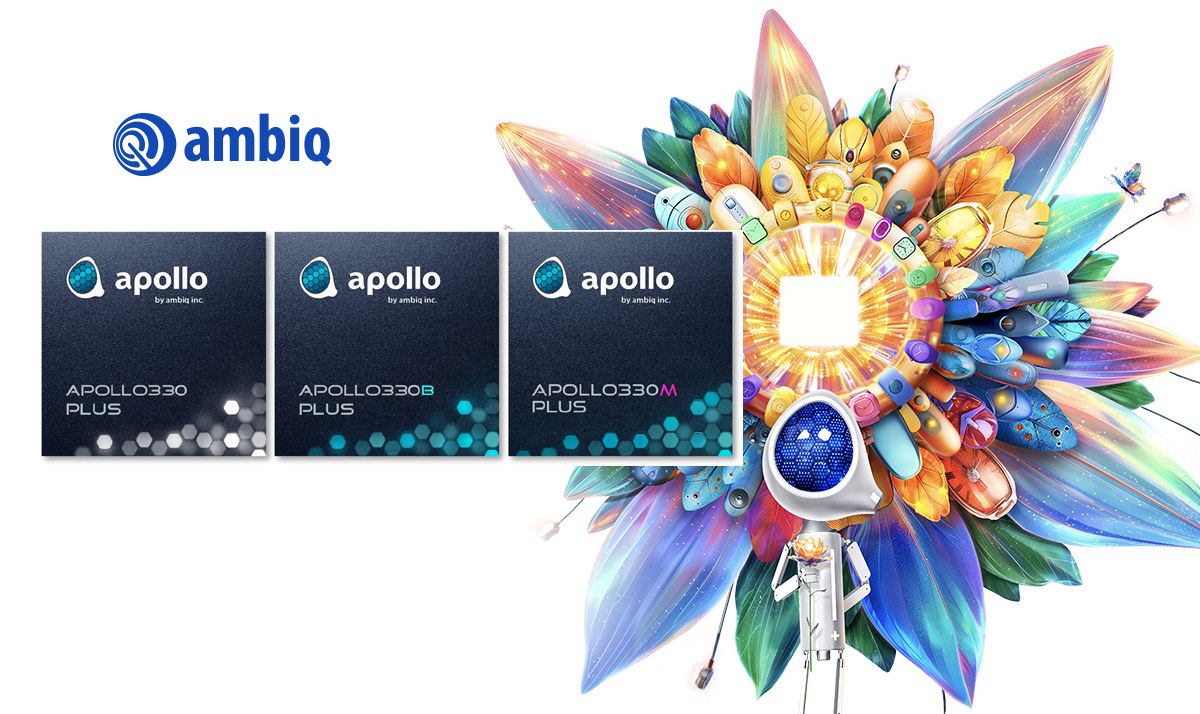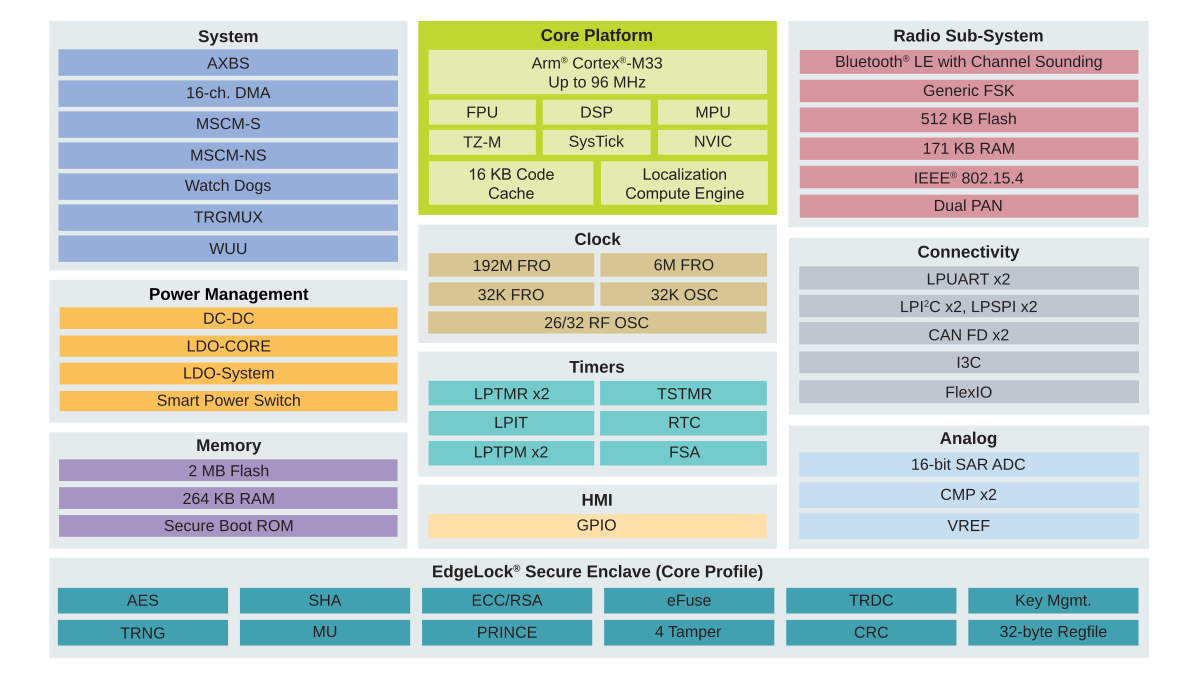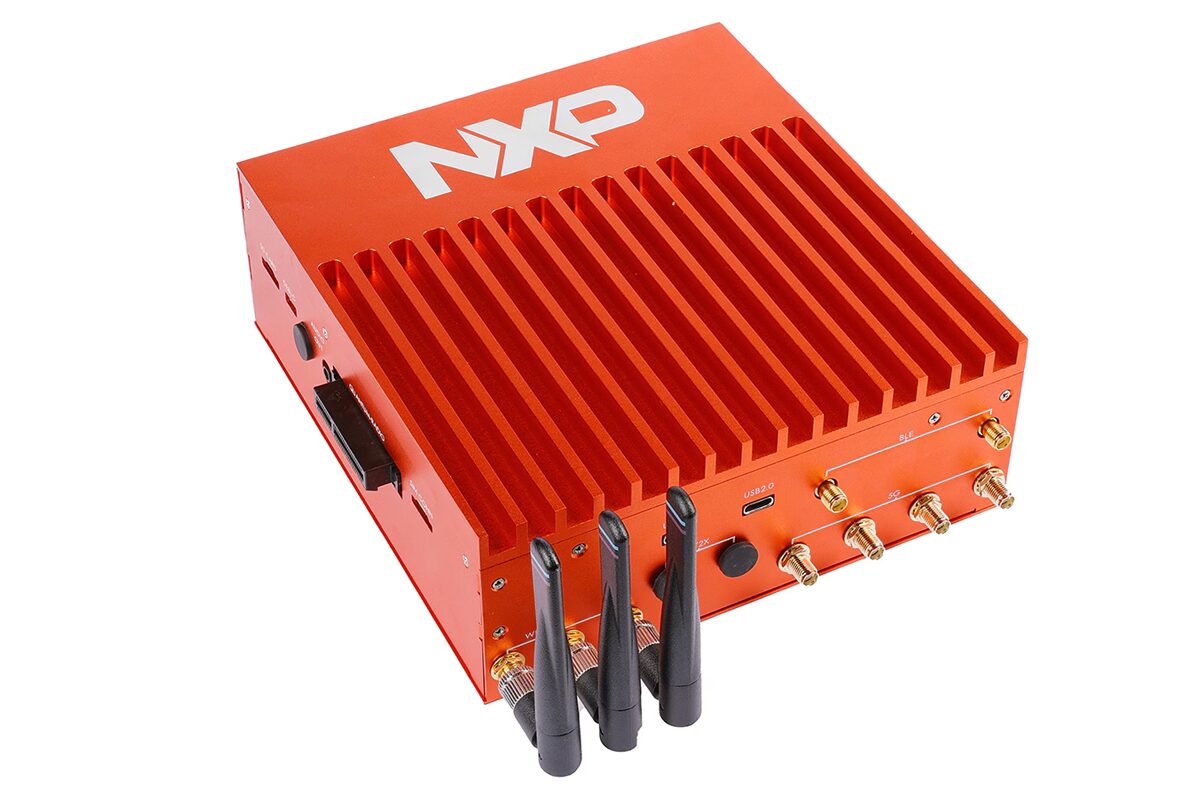RAKwireless RAK11160 is a new low-cost, low-power LoRaWAN, WiFi 4, and Bluetooth LE module based on ESP32-C2 (ESP8684) wireless microcontroller and STM32WLE5 LoRa SoC for LPWAN IoT applications. The company noticed that many people would combine their STMicro STM32WL-based RAK3172 WisDuo LoRaWAN module with an ESP32 module to add WiFi and/or Bluetooth connectivity to their projects besides LoRaWAN. So RAKwireless decided to offer a module combining both STM32WL and ESP32-C2 to offer a cheap and much more compact solution to their customers. RAK1160 was born. RAwireless RAK11160 specifications: LPWAN SoC/SiP – STMicro STM32WLE5 Core – Arm Cortex-M4 MCU @ 48 MHz Memory – 64 KB RAM Storage – 256 KB flash memory with ECC Wireless – Sub-GHz radio based on Semtech SX126x LoRaWAN 1.0.4 specification compliant Supported bands – EU433, CN470, IN865, EU868, AU915, US915, KR920, RU864, and AS923 LoRaWAN Activation by OTAA/ABP LoRa Point-to-Point (P2P) communication Tx Power Output – […]
STMicro STM32WBA5MMG is a tiny wireless module with Bluetooth LE 6.0, Zigbee 3.0, and OpenThread
STMicro’s STM32WBA5MMG is a tiny (12.5 x 8 mm), ultra-low-power 2.4 GHz wireless module based on the STM32WBA55UG wireless microcontroller with support for Bluetooth 6.0 LE, Zigbee 3.0, and OpenThread. The company further adds that designing a board for the module does not require any RF expertise, it provides a fully integrated Bill of Materials (BOM) with 32 MHz and 32 kHz crystals and integrated antenna matching or optional external antenna configurations, and its compatibility with 2-layer PCBs helps reduce costs. STM32WBA5MMG specifications: Wireless MCU – STMicro STM32WBA55UG Core – 32-bit Arm Cortex-M33 CPU with TrustZone®, MPU, DSP, and FPU Memory – 128 KB SRAM, including 64 KB with parity check Storage 1 MB flash memory with ECC, including 256 KB with 100 kcycles 512-byte (32 rows) OTP ART Accelerator – 8 KB instruction cache allowing 0-wait-state execution from flash memory (frequency up to 100 MHz, 150 DMIPS) Wireless Bluetooth […]
MOKO LW005-MP – A LoRaWAN Smart Plug and power meter
The MOKO LW005-MP is a LoRaWAN smart plug for indoor power and energy consumption monitoring, featuring sockets compliant with EU, US, UK, and FRA standards and suitable for industrial equipment control, power monitoring, and energy management. The UL-certified smart plug operates with 100-230V AC mains, offers 0.5% power measurement accuracy, supports Bluetooth 4.0 for initial configuration and OTA updates, and can be controlled with LoRaWAN commands, an open-source mobile app, or a physical button. MOKO LW005-MP specifications: Wireless Bluetooth LE V4.0 for local configuration and OTA updates. LoRa Protocol – LoRaWAN V1.0.3 Supported frequency bands – CN470, EU868, AU915, US915, AS923, IN865, KR920, EU433, CN779, and RU864 Max Transmit Power – +21dBm Rx Sensitivity – -137dBm @ SF12 300bps Range – Up to 7 km in urban open space Power measurement accuracy – ±0.5% Misc Power and pairing button 2x RGB LED indicators display network status and power consumption levels. […]
Bestechnic BES2700YP Arm Cortex-M55 Bluetooth Audio SoC targets headphones, earbuds, portable speakers
Bestechnic BES2700YP is an Arm Cortex-M55 Bluetooth Audio SoC designed for Smart earbuds with adaptive ANC, Smart Bluetooth headphones/headsets, ANC hearing-aids, Bluetooth speakers, and other portable audio devices When I wrote about the Ambiq Apollo330 Plus SoC family last week, I realized it was the first time I covered Arm Cortex-M55 microcontrollers with built-in wireless, in that case Bluetooth LE 5.4 and 802.15.4 (Thread/Matter) radios, and that’s how I came across the BES2700YP SoC with a more narrow use cases since it’s made for Smart Bluetooth audio applications. BES Technic BES2700YP key features and specifications: CPU Subsystem – Arm Cortex-M55 core Sensor Hub Subsystem – Arm STAR-MC1 core (improved Arm Cortex-M33 core) with sensor engine, BECO NPU, and VAD (Voice Activity Detection) Memory – 4 MB SRAM shared across the CPU, Bluetooth, and Sensor Hub cores Storage – Flash in package, boot ROM Bluetooth Subsystem Arm STAR-MC1 core (Arm Cortex-M33 […]
Wio Tracker L1 Pro is a battery-powered, ready-to-use Meshtastic LoRa node
The Wio Tracker L1 Pro is a battery-powered LoRa node pre-flashed with the Meshtastic firmware for low-power off-grid messaging and GPS coordinates sharing. It integrates a Semtech SX1262 LoRa module for wireless data transmission and uses a Nordic nRF52840 Bluetooth 5.0 SoC to process and display the data. The L1 Pro also features a 1.3-inch OLED display, a rechargeable battery, a USB Type-C port, and a solar panel connector housed in a durable 3D-printed enclosure. It is fully compatible with the Grove ecosystem and offers expansion via PTH headers and an SWD interface. Wio Tracker L1 Pro specifications: SoC – Nordic Semiconductor nRF52840 CPU – 32-bit Arm Cortex-M4F microcontroller @ 64 MHz Memory & storage – 1 MB Flash, 256 KB RAM Wireless – Bluetooth 5, Thread, ANT, Bluetooth Mesh, 802.15.4 (Zigbee), 2.4 GHz proprietary Display 1.3-inch OLED display with 64 x 28 resolution Active Area – 34.5mm x 23.0mm x 1.47mm […]
Ambiq Apollo330 Plus SoC Series Cortex-M55 MCU family offers optional Bluetooth 5.4 LE and 802.15.4 radios
Ambiq Apollo330 Plus SoC Series is a new family of ultra-low-power, sub-threshold Arm Cortex-M55 microcontrollers with optional Bluetooth 5.4 LE and 802.15.4 radios for IoT and Smart Home applications. The Ambiq Apollo330 Plus MCU itself appears to be a cost-down version of the Ambiq Apollo510 general-purpose Cortex-M55 MCU introduced last year, with the removal of display and graphics support, lower RAM and NVM capacities (2MB/2MB vs. 3.75MB/4MB), and fewer I/Os, but with a wider 1.71 to 3.63V voltage supply range. Two other SKUs add wireless: the Apollo330B Plus includes a Bluetooth 5.4 LE radio, and the Apollo330M Plus an extra 802.15.4 radio for Zigbee, Thread, and Matter as a multiprotocol SoC. Ambiq Apollo330 Plus specifications: CPU Core – 32-bit Arm Cortex-M55 @ 96 MHz / 250 MHz (turboSPOT) with Helium technology, Network coprocessor Memory- 2MB SRAM Storage 2MB NVM SDIO v3.0 and eMMC flash controllers Wireless Arm Cortex-M4F network processor […]
NXP MCX W72x Cortex-M33 wireless SoC supports Bluetooth 6.0 with Channel Sounding, Zigbee, Thread and Matter
NXP MCX W72x series Cortex-M33 wireless SoCs support for Bluetooth 6.0 and an 802.15.4 radio for Zigbee, Thread, and Matter. The MCX W72x family also implements Bluetooth Channel Sounding for accurate distance measurements with the help of a Localization Compute Engine (LCE) to reduce latency. It’s the second MCU part of the MCX W wireless family following the MCX W71x MCU, and the new MCX W72x wireless microcontroller is offered with up to 264 KB SRAM, 2MB flash, features a dedicated Cortex-M33 core to handle Bluetooth and 802.15.4 radios, implements an EdgeLock Secure Enclave for security, and integrates plenty a range of I/Os in a 48-pin package. NXP MCX W72x key features and specifications: MCU cores and memory/storage Application core – Arm Cortex-M33 core up to 96 MHz with 2 MB program Flash with ECC, 264 kB SRAM with ECC and parity Networking core – Arm Cortex-M33 core with dedicated […]
NXP OrangeBox 2.0 V2X automotive domain controller features NXP i.MX 94 SoC
NXP OrangeBox 2.0 is an NXP i.MX 94-powered V2X (Vehicle-to-Everything) automotive domain controller development platform designed for modern vehicles. It works as a centralized controller between the vehicle’s gateway and its wired and wireless technologies, with features like Wi-Fi 6/6E, Bluetooth 5.3, UWB, 5G cellular, and secure car access for automotive zone controllers, smart car access systems, and V2X communication systems. It’s the first i.MX 94 platform we’ve covered here, and NXP says the OrangeBox 2.0 delivers up to 4x the performance of its predecessor – the OrangeBox – based on an NXP i.MX 8XLite SoC. The i.MX 94’s Cortex-A55, Cortex-M7, and Cortex-M33 cores, and the eIQ Neutron NPU enable AI features such as an intelligent firewall and predictive maintenance. For cybersecurity, it includes post-quantum cryptography support, an EdgeLock secure enclave, and a functional safety island that meets ISO 26262 ASIL-B standards. Connectivity options include dual 2.5 Gbps and triple […]


